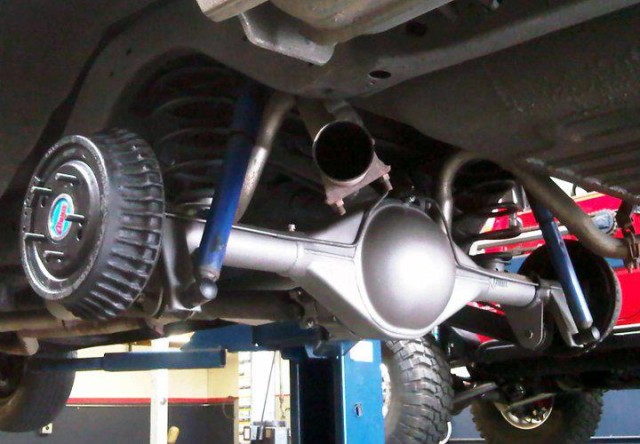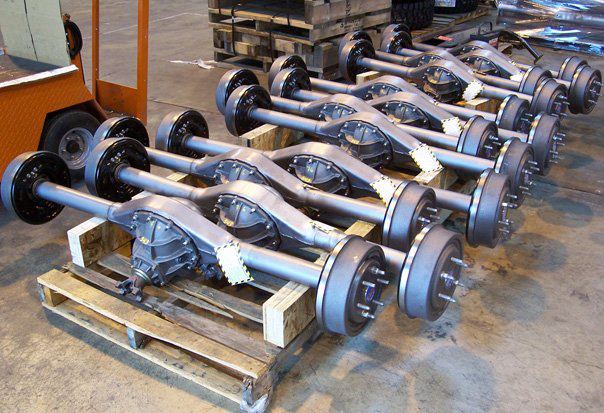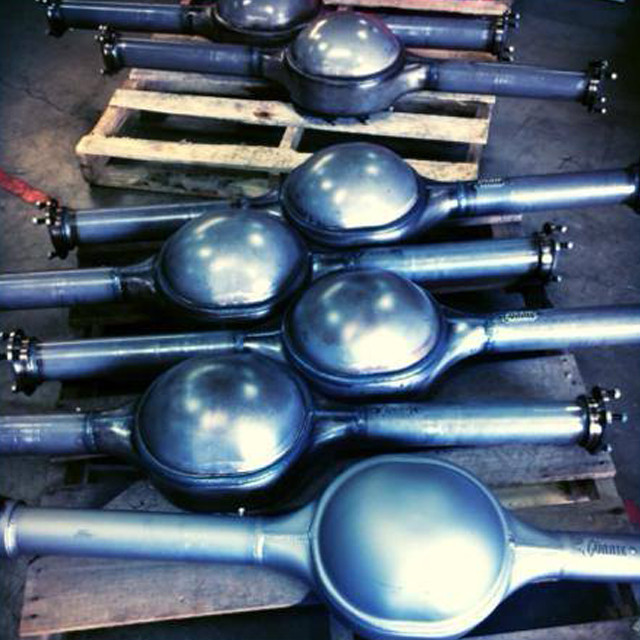We are kicking off a mini series dedicated to differentials with the help of the folks at Currie Enterprises. In this series we’ll have short “tech tip” style pieces on things that the street rod market may not know exists or has misconceptions about or doesn’t understand.
 The Ford 9-inch rear differential is one of the most widely known differentials in the automotive industry. Ford used the popular differential in 1957 in the Fairlanes and F-series trucks and continued to use it up into the mid-80s. The differential certainly built a reputation that is heavily relied upon but is it really a necessity?
The Ford 9-inch rear differential is one of the most widely known differentials in the automotive industry. Ford used the popular differential in 1957 in the Fairlanes and F-series trucks and continued to use it up into the mid-80s. The differential certainly built a reputation that is heavily relied upon but is it really a necessity?
Many hot rodders think they can’t even drive their car down the street without blowing up the rear differential. While this might be true for that one guy that just can’t seem to keep his foot from mashing the skinny pedal, most of us don’t truly need that extra weight we end up dragging around. The alternative is the baby brother, the Ford 8-inch.
With a ring gear that is a full inch smaller, the overall housing can get smaller. Over an inch smaller! The housing center height on an 8-inch being 10 1/8-inches where the 9-inch is 11 1/4-inches. Smaller housing means less steel and less weight. For cars running a flat head engine or a 6 cylinder, cutting the overall unit weight down as well as the rotating weight of unnecessarily larger components on the car could be what gets it into the sweet spot of power to weight ratios and improves handling at the same time. “Flat head or six cylinder cars don’t run a 9” because it takes more horsepower to turn it,” Says Brian Shephard of Currie Enterprises. “The extra strength becomes a hindrance.”
“Flat head or six cylinder cars don’t run a 9” because it takes more horsepower to turn it.” Says Brian Shephard of Currie Enterprises. “ The extra strength becomes a hindrance.”
The 8-inch rear differential originally came in a massive range of Ford and Mercury vehicles. Mustangs, Mavericks, Falcons, Cougars, Comets; the list goes on. Many owners of these cars don’t know what an 8-inch is considering it looks so similar to its big brother. One of the draw backs to the Original Equipment 8-inch differentials is the odd tube sizes and small axle bearings. To cure this, Currie standardized their tubes to an even 3-inch diameter and uses the larger outer bearings. The large bearing ends and 2.500-inch brake space offset allows the 8-inch to be ABCS (Aftermarket Brake Configuration Standard) compliant, giving installers a much wider range of brake options than an OEM 8-inch would have, while the smaller profile of the 8-inch housing can be tucked into tighter places easier.

The Currie Enterprises 8-inch differential could be what brings your hot rod’s power to weight ratio into the sweet spot.
Stupid can break anything. Even a 9-inch can be broken with a moderate horsepower rating and a loose nut behind the wheel. Depending on your build and what you’ll actually end up doing with the car, the benefits of the smaller rearend just might raise it a few notches over the 9-inch. Others may very well need the 9-inch.
Stay Tuned for more in the Tech Info with Currie Enterprises mini series. For more information on the Currie Enterprises 8-inch and 9-inch rear differentials, head on over to www.currieenterprises.com.




















